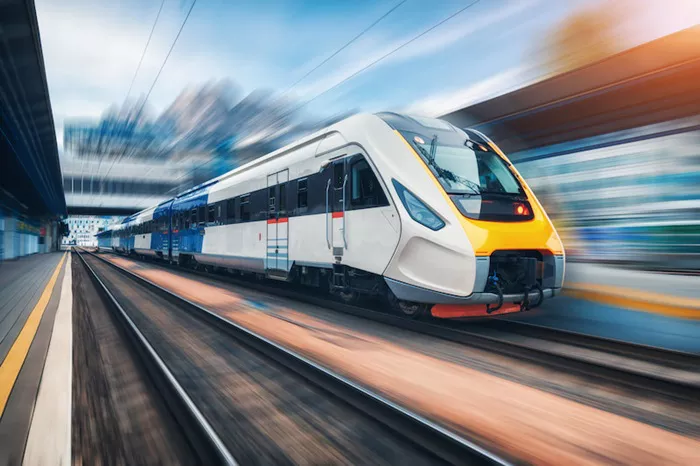Vietnam is set to redefine its domestic transportation infrastructure with the approval of a groundbreaking $67 billion high-speed rail project, which will connect the nation’s capital, Hanoi, to its largest city, Ho Chi Minh City. Approved by the National Assembly on November 30, 2024, this ambitious development is poised to reshape not only the country’s travel landscape but also have far-reaching implications for the global tourism industry.
A Transformational Leap in Travel: Reducing Hours to Moments
The new high-speed rail promises to drastically cut the travel time between Hanoi and Ho Chi Minh City, slashing the current 30-hour journey on the Reunification Express to just five hours. This dramatic time-saving will revolutionize travel for both business and leisure travelers, offering a swift alternative to air travel. The rail network will span 23 stations across 20 cities and provinces, making it a key artery for connecting regions and enhancing accessibility throughout Vietnam’s north-south corridor.
For tourists and business professionals alike, this high-speed rail represents a significant leap in convenience and efficiency. With three of Southeast Asia’s busiest domestic air routes (Hanoi-Ho Chi Minh City, Danang-Ho Chi Minh City, and Danang-Hanoi) already operating, the new rail service is expected to reduce passenger volumes on these flights, presenting a sustainable and cost-effective alternative to air travel.
Economic and Tourism Benefits: Unlocking New Growth Opportunities
Beyond speed, the rail project is set to bolster economic growth by improving connectivity across regions, especially to areas that are currently underserved. As the rail system links major tourism hubs with lesser-known destinations, it will create new opportunities for travelers to explore Vietnam’s diverse landscapes—ranging from the vibrant streets of Hanoi and Ho Chi Minh City to the peaceful countryside and smaller cities.
The project will improve tourism in lesser-explored regions, spreading the benefits of tourism beyond just the major cities.
Offer businesses a more reliable and efficient transportation option, enhancing productivity and connectivity.
Stimulate regional economies by improving access and encouraging both domestic and international travelers.
The high-speed rail could position Vietnam as a leading transportation hub in Southeast Asia, attracting investment, increasing regional integration, and solidifying its role in the global tourism sector.
Global Impact: Attracting International Tourists
The high-speed rail’s impact will not be limited to Vietnam’s borders. As a key Southeast Asian hub, Vietnam offers an attractive gateway for international travelers looking to explore the region. The new rail system’s speed and convenience will make it easier for tourists to visit the country’s iconic landmarks, such as Hanoi’s historical sites, Ho Chi Minh City’s dynamic urban landscape, and everything in between. The ease of travel will likely encourage multi-destination itineraries within Southeast Asia, further positioning Vietnam as a central destination for regional tourism.
The enhanced connectivity will also have broader implications for international visitors. Travelers from Europe, North America, and Asia will find Vietnam even more appealing, with the ability to seamlessly explore key cities and attractions. The rail system is expected to boost global tourism by making Vietnam a more integrated part of travelers’ Southeast Asian journeys.
Sustainability: A Greener Alternative to Air Travel
As sustainability becomes a key consideration in global travel, the high-speed rail offers a greener alternative to domestic air travel. Airplanes contribute significantly to carbon emissions, whereas rail travel is a more environmentally friendly method of transportation. By shifting from air to rail, Vietnam’s new high-speed system aligns with global efforts to reduce the travel industry’s environmental footprint.
The launch of the high-speed rail reflects a growing global trend toward sustainable transportation solutions, providing a model for other countries in the region and beyond.
Conclusion: A New Era of Travel for Vietnam and Beyond
Vietnam’s high-speed rail project is set to have a profound impact on the country’s tourism and economy, reducing travel times, enhancing accessibility, and promoting sustainable transportation. By linking major cities with lesser-known regions, the rail system will unlock new growth opportunities, making Vietnam a more attractive destination for both domestic and international travelers.
The high-speed rail is not just a leap forward for Vietnam—it’s a move that will help shape the future of travel in Southeast Asia and beyond, making it a more connected, sustainable, and vibrant region for global tourists.
Related topics:
- Thanksgiving travel rush: Columbia airport braces for record crowds
- Beckley Travel Plaza to Open in 2025 with New Dining & Modern Features
- Saudi Arabia to Launch VAT Refund System for Tourists in 2025, Boosting Tourism Sector

